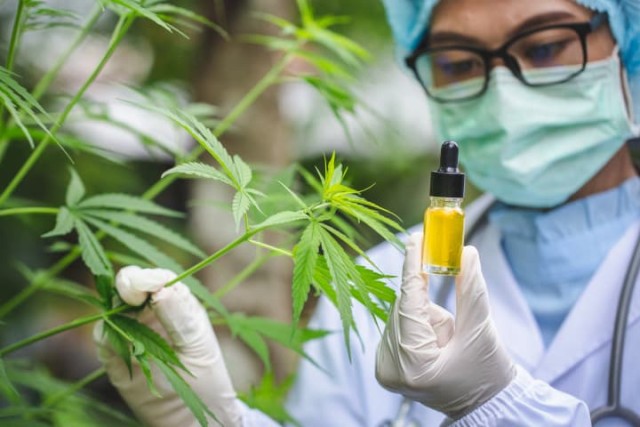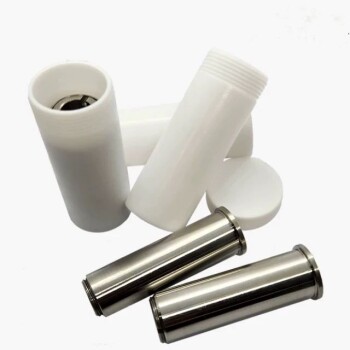Distillate oils are becoming increasingly popular in the cannabis industry due to their unmatched purity and versatility. These oils are made through a refinement process that removes impurities and concentrates the desired compounds, such as tetrahydrocannabinol (THC) and cannabidiol (CBD). However, understanding the specific techniques used to create distillates can be challenging, as many of the methodologies used are proprietary and still in research and development, or even patent-pending.
One popular method of distillate extraction is through the use of short path distillation. This technique involves heating the cannabis extract to a specific temperature range, causing the desired compounds to vaporize and travel through a condenser, where they are then collected and cooled. This process allows for precise control over the final product and results in a highly purified oil.
Another common method is called fractional distillation, which separates the compounds of an extract based on their boiling points. This allows for the separation and purification of specific compounds, such as THC or CBD.
Despite the proprietary nature of the techniques used, it is clear that distillate oils offer a wide range of benefits and application potential. These highly potent oils are easy to consume and infuse into various products, such as edibles, topicals, and vape cartridges. Additionally, distillates have the potential to be used in niche markets, such as pharmaceuticals and cosmetics, due to their high levels of purity and concentration.
Extraction technique
A mature cannabis plant is known to contain hundreds of identifiable compounds, including cannabinoids, terpenes, and flavonoids. Each of these compounds plays a unique role in interacting with our endocannabinoid systems, and the combination of these compounds is known as the "entourage effect." The entourage effect is responsible for giving us the unique experiences we desire when consuming cannabis.
Short path distillation
When it comes to creating cannabis concentrates, these compounds are extracted together from the vegetative material of the cannabis plant through various extraction processes. However, to distill these compounds into their purest form, additional layers of refinement must be executed. This process is known as "fractional" or "short path distillation."
Fractional distillation involves separating the compounds of an extract based on their boiling points. This allows for the separation and purification of specific compounds, such as THC or CBD. Short path distillation, on the other hand, involves heating the cannabis extract to a specific temperature range, causing the desired compounds to vaporize and travel through a condenser, where they are then collected and cooled. This process allows for precise control over the final product and results in a highly purified oil.
These methods are known to produce single compound oils that can reach upwards of 99% purity. This level of purity is highly sought after by manufacturers, as it allows them to create highly potent and consistent products. Additionally, this level of purity is also desired by consumers, as it allows for more precise dosing and a more consistent experience.
Process of steam distillation
Fractionation and short path distillation are not new methods, and have been used for many years in various industries. These methods have been used in the early days of cannabis distillation research and also in other commercial industries such as the fragrance and essential oil industries. The fragrance and essential oil industries have been credited for piloting many of the same fundamental refinement principles that we see overlapping in today’s cannabis distillate manufacturing scene.
The process of steam distillation is one of the most commonly adopted techniques from the botanical oil extraction markets by cannabis processors to make various oil distillates. Steam distillation works by heating the plant material to create steam, which then carries the essential oils away from the plant. The steam is then cooled and condensed back into a liquid, which separates the essential oils from the water.
Fractionation is another common technique adopted from the botanical oil extraction markets by cannabis processors. Fractionation works by separating the compounds of an extract based on their boiling points. This allows for the separation and purification of specific compounds, such as THC or CBD.
The Isolation of Compounds through Fractionation and Short Path Distillation Techniques
Making pure oil from compounds found in cannabis plants, like THC, requires a series of steps to refine it. First, the valuable and volatile compounds, like THC, are separated from the plant using special techniques. This process removes the good compounds but leaves behind unwanted compounds like fats and lipids. To remove these unwanted compounds, the material goes through a process called winterization, where a solvent like ethanol is used to get rid of them.
After that, the isolated compounds need to be heated to activate their medicinal properties through a process called decarboxylation. Finally, the material goes through a process called short path distillation or rational distillation, which is done in a series of multiple steps to purify the desirable compound (typically THC or CBD) to a pure state.
Short path distillation uses vacuum pressure, steam, and heat to change the boiling points of the compounds, so they are exposed to cooler temperatures when they pass through. Depending on the distillation process, these volatile compounds can either be separated individually or together for collection. Through this process, the volatile compounds are separated by their molecular weight and individual boiling point, leaving behind less volatile and unwanted compounds. A distillate may be passed through this process multiple times to make it even purer. The final product of THC distillation is a clear and translucent viscous oil that looks like ultra-refined honey in consistency and color.
Cannabis Distillates Function
Cannabis distillates are a highly versatile product with a wide range of potential applications. One of the main advantages of distillates is their purity, as they contain little to no residual flavors or aromas, making them perfect for all kinds of practical applications. This purity allows for greater precision when it comes to dosing, as well as a more consistent experience for the consumer.
The process of distillation allows for the separation of the various compounds found in cannabis, such as cannabinoids and terpenes, into their individual compound solutions. This allows for processors to recombine these compounds in various formulas with complete control and precision. This level of control and precision allows for processors to individualize concentrates with accuracy like never before, creating products tailored to meet the diverse needs of consumers.
Given the sheer versatility of cannabis distillate oils, it's no wonder this product is considered to be worth its weight in gold. Distillation is a relatively new technique in the cannabis concentrate market, but it is quickly becoming the preferred method for cannabis extraction and refinement. The process of distillation allows for the separation of the various compounds found in cannabis, such as cannabinoids and terpenes, into their individual compound solutions. This allows for processors to recombine these compounds in various formulas with complete control and precision, creating products tailored to meet the diverse needs of consumers.
One of the main advantages of distillates is their purity, as they contain little to no residual flavors or aromas, making them perfect for all kinds of practical applications. This purity allows for greater precision when it comes to dosing, as well as a more consistent experience for the consumer. Distillates can also be applied in many different ways, including oral, sublingual, or transdermal application, or even though vaporization and inhalation (e.g. dabbing).
In terms of infused possibilities, distillates can be infused in a variety of different carrier oils, such as coconut oil or MCT oil, to create a more versatile product.
Conclusion
Cannabis distillates are a highly versatile product with a wide range of potential applications. The process of distillation allows for the separation of the various compounds found in cannabis, such as cannabinoids and terpenes, into their individual compound solutions.
This allows for processors to recombine these compounds in various formulas with complete control and precision, creating products tailored to meet the diverse needs of consumers. The purity of distillates, along with the ability to manipulate and customize the final product, make them a preferred method for cannabis extraction and refinement.
Distillates can be applied in many different ways, including oral, sublingual, or transdermal application, or even though vaporization and inhalation (e.g. dabbing). They can also be infused in a variety of different carrier oils, such as coconut oil or MCT oil, to create a more versatile product that can be used for different administration methods. With its high purity, versatility, and potency, cannabis oil distillates are a valuable product that is worth its weight in gold.
Related Products
- Laboratory Hydraulic Pellet Press for XRF KBR FTIR Lab Applications
- Wall Mounted Water Distillation Unit
- Custom PTFE Teflon Parts Manufacturer for PTFE Bottle Oil Fume Sampling Tube
Related Articles
- Automated laboratory XRF and KBR pellet press operating procedures
- Understanding the Functioning and Applications of a Hydraulic Pellet Press
- Understanding Hydraulic Pellet Press: Working Mechanism and Applications
- Guide for Xrf Pellet Press
- A Comprehensive Guide on Pressing XRF Pellets Using a KinTek Automatic Hydraulic Press



